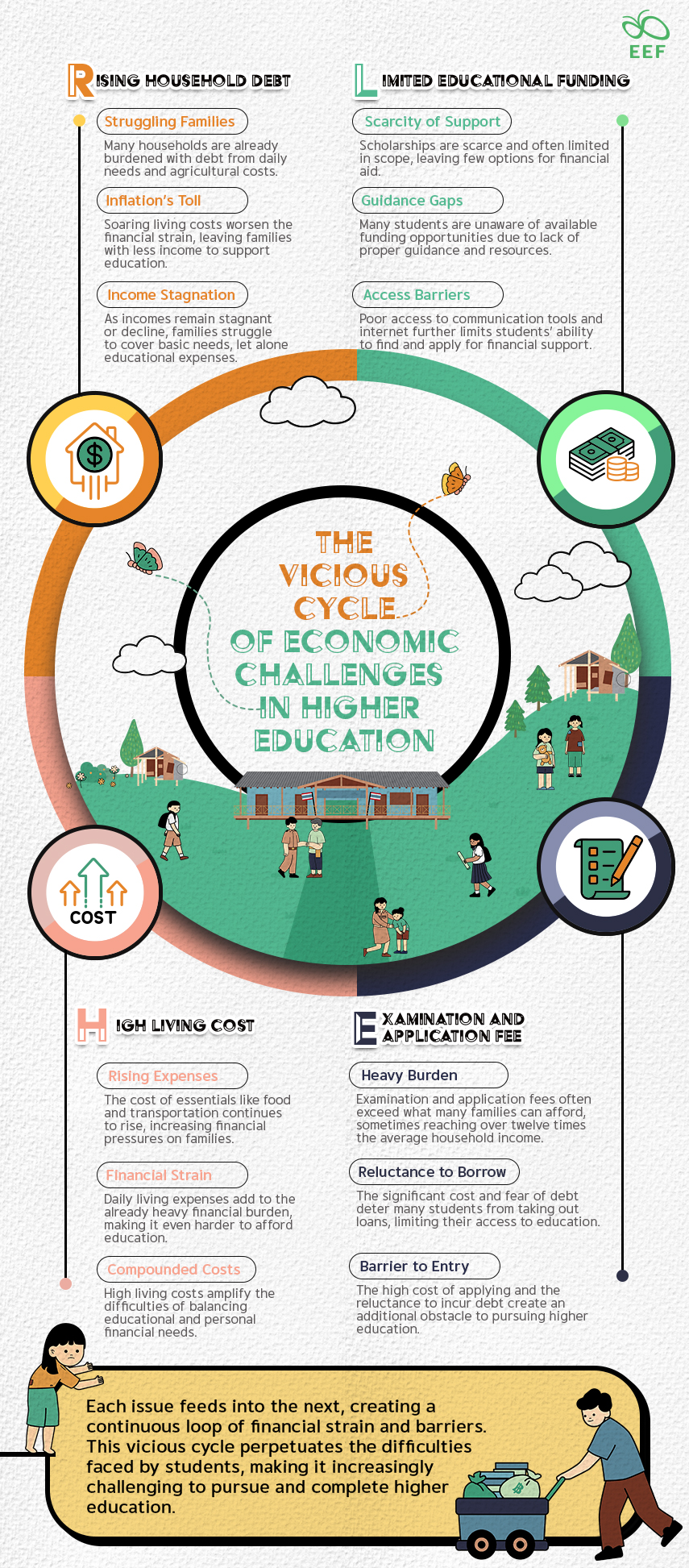
For many students from impoverished households — classified by the Equitable Education Fund (EEF) Thailand as “Poor” and “Very Poor” groups — financial constraints remain a significant barrier to pursuing higher education. Household debt, primarily driven by daily consumption and agricultural needs, continues to rise, with inflation further straining already tight budgets. Low-income students face educational costs up to four times higher than their wealthier peers, with education consuming 22% of their household income compared to 6% for wealthier families. Despite the availability of scholarships and loans, awareness of these opportunities is often limited due to poor internet access and inadequate guidance.

Additionally, the limited number of scholarships, coupled with complicated and delayed application processes, deters many from applying, while others are reluctant to incur more debt — as evidenced by only 5.14% of very poor students borrowing from the Student Loan Fund. Beyond tuition, rising living costs, including food and transportation, as well as high examination and application fees, compound these financial difficulties, with some incidental costs exceeding 12 times the average household income. These economic pressures create a cascading effect, making it increasingly difficult for low-income students to pursue and complete their education, as each challenge amplifies the next.
The Vicious Cycle of Economic Challenges in Higher Education

Each issue feeds into the next, creating a continuous loop of financial strain and barriers. This vicious cycle perpetuates the difficulties faced by students, making it increasingly challenging to pursue and complete higher education.
The Equitable Education Fund (EEF) Thailand is advancing educational equity through its Education Security System, focusing on economically disadvantaged groups. Addressing these disparities, the system confronts the pressing issue of reintegrating nearly 394,000 dropouts, while also enhancing teacher quality and fostering collaborative policies. Financial barriers also hinder access to higher education, with rising costs limiting opportunities despite scholarships. In response, EEF’s High Vocational Innovation Scholarship addresses skill shortages, linking education with employment through enhanced vocational training. Amidst these efforts, supportive schools and teachers play a vital role in mitigating dropout risks and maintaining student engagement and success, and EEF’s policy recommendations chart a dynamic roadmap for a more inclusive and equitable educational system, ensuring a future where every student’s right to education is realized through equitable and innovative solutions.

